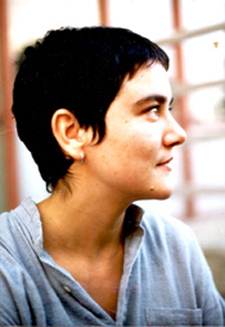
When Sophia was young she joined ’Woodcraft’. She loved it. She used to attend their weekly groups as well as going camping with them. She became very aware of being her own person, recycling and the eco movement in general. Later on, although diagnosed as having dyslexia at the, too late age of 17, she did a degree in art, whilst all the time keeping alive her deep interest in organic foods, yoga, camping, cycling, music and a belief in personal responsibility. She incorporated her art into all of these. She had a zest for life, second to none. She believed that all of us were responsible for what we did and that we should not accept bullying to ourselves or others.
The following is an account of some of the main events of Sophia’s illness, severe ME.
Sophia was the youngest of my four children. As a child she had chicken pox. When she was 17 she was a passenger in two separate car crashes. Shortly afterwards, she was hospitalized with suspected meningitis and was given a lumbar puncture. At 19 she went travelling and working in Africa, before which she had to have multiple vaccinations. Whilst in Africa she had two doses of malaria.
In 1999, Sophia got the ‘flu. She could not recover from it. By December of that year she could only leave her bed to have a bath. In June 2000, she was moved into the tenth floor of a high-rise block of flats. There, she would have a bath each day where she relaxed for about an hour. Within three months she “crashed” and had become bed-bound. I could not understand why, as she had done nothing different during this time.
I then heard about a carbon monoxide detector. I bought one and sited it near the ventilator shaft in the bathroom. It registered positive ++. I informed the council and the gas board who sent a man around to see it. He flashed a torch around in the shaft and said that it was fine. He did not seem to understand the seriousness of it and treated me as if I were invisible. From that point onwards any sort of chemical, such as soap, powder, perfume, detergent, cleaning liquids, car fumes, etc. sent Sophia into further decline. She was also badly affected by electromagnetic fields, which also included human beings. The block of flats was filled with TVs, radios, etc. She had also the multiple symptoms of ME including severe pain. She became even more ill, if that were possible. She also felt the building swaying in the wind which, in turn, escalated her symptoms. I had not realised that architects build in a “sway factor” to tall buildings in order for them to remain stable.
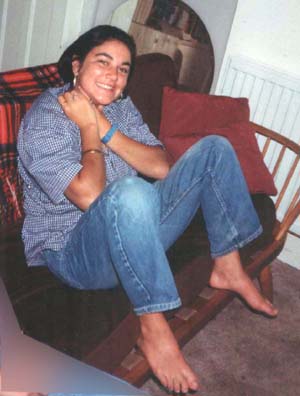
Sophia’s room had to be completely “blacked-out” and she also wore eye pads as any form of light seared her eyes and affected her in other ways. She had to wear ear plugs as any noise or sound, even the sound of a voice, made her even more ill. She could not bear to be touched for the same reason, even though she craved the human touch and the comfort it gave. Since that time she had been unable to have either a bath or a hair wash as water too magnified her symptoms. She was only able to lie on her right side. She had, for most of this time, been unable to speak. She had been unable to read or write, listen to the radio or have any electrical gadgets in her room. She was unable to have visitors. Her G.P. Dr.Firth was at a loss as to what to do. She suggested that I put Sophia “away in a home and get on with the rest of my life”. I did not agree. Years ago, I had nursed patients with all sorts of diseases; never had I seen anyone so profoundly ill in so many diverseways, as Sophia.
During one of my visits to Dr.Firth , I was told that Sophia had made herself ill and that I was keeping her ill and as long as I was looking after her she would never recover. She said that it would be better with me out of the flat and independent carers installed. In 2001, Dr.Firth approached Professor Findley at Oldchurch Hospital in Romford, telling me, for legal protection of the G.P. and the surgery. Sophia asked me to research the clinic, which cost thousands of pounds. They told me, when I pressed them for long-term results, that patients usually revert to the point from whence they started. I spoke to a couple of ex-patients who were afraid to have their names used; they said that this clinic was run on the lines of mental health and used Graded Exercise, although it claimed to be a neurological clinic. They also said that when patients did not get better that they were given a different diagnosis before being sent home. Sophia elected not to go to the clinic.
By 2002, Sophia had to eat every 20 minutes, else her symptoms would escalate to even more severe heights. Dr.Firth told me that a number of psychiatrists had been approached who had not wished to be involved in such a case, adding how lucky we were to finally get one who would agree. I voiced my fears that Sophia would be removed from her flat; both Dr. Firth and subsequently the psychiatrist Dr. Baginski assured me that this would never happen.They lied. This proved untrue, later.
I had already given Dr. Firth copies of Margaret Williams’ “Denigration by Design” and “Information for Clinicians and Lawyers” by Marshall, Williams and Hooper; I now gave copies of these to the psychiatrist, Dr. Baginski. It would appear as if neither of them had even read these.
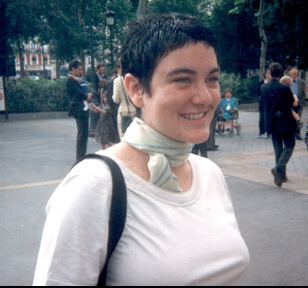
Dr. Baginski visited Sophia for 20 minutes one morning.
He gave her no physical examination, which I found strange, given that her blood pressure was 80/60 and was unable to understand that Sophia’s “clock” was constantly on the move and that mostly her day-time was in our night-time.
Dr. Baginski did not seem to understand any of her myriad symptoms and the following day gave a lecture on M.E. to a large number of doctors; never having asked Sophia for her consent.
He wanted me to be present, though I had reservations, and gave everyone there a handout about Sophia and our family, (which I only received later as part of the pack of Sophia’s notes).
It read like a novel with some horrendous so called “facts” that I did not recognise as a true representation. I was also shocked at the misrepresentation of Sophia’s symptoms to the doctors and started to object, at which point I was ushered out of the room.
The following week Dr. Baginski asked to see me at the hospital, in a manner that I interpreted that would not benefit Sophia if I refused. I had no option but to comply. I was told that if Sophia refused to go to Oldchurch Hospital in Romford, or if she did not recover within the following 6 months, that she would be sectioned under the Mental Health Act, then added that if I tried to stop this, then he , Dr. Baginski , would go to the courts to have me removed as the nearest relative. Furthermore, if I did not open the door when they would come to take Sophia away, that the police would be called to “smash the door down”. When I asked how much better Sophia would get by these proposed actions, the reply was given that it was “none of your business, that it was for the courts to decide”. The psychiatrist wanted to arrange for me to see a psychologist so that I could understand the good, that he ,Dr. Baginski , was doing to Sophia. I refused.
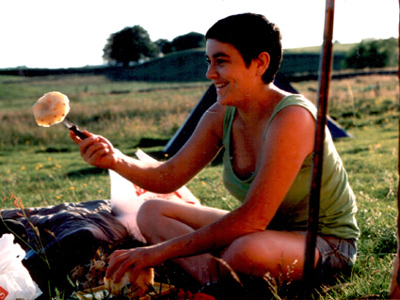
From January 2003, Sophia had started to improve; she was able to tolerate some light, talk, sit up and have a few visitors. This continued and I wrote in detail to Sophia’s doctor, informing of the progress. Dr. Firth did not want to know and said that Sophia could no longer remain a patient and that Sophia was being passed over to a colleague, Dr. Lipscombe , Sophia asked for copies of her notes. These were given at the full price of £50, having first been abridged in case it would affect Sophia’s “mental health”. Despite no longer being her doctor, this very same doctor, along with the psychiatrist , Dr. Baginski , and social worker Catherine Connolly tried to enter the flat to section Sophia in May 2003. They were not allowed in. I then phoned the doctor and said that Sophia was devastated and that she did not want to be sectioned and that she was willing to go into a different clinic. The doctor said “it’s too late for that now”. The die had been cast; they were determined on their course of action.
Between January and June 2003, I wrote letters to Dr. Rosenberg , the Acting Chief Executive of the NHS Primary Care Trust and to many others, making them aware of the situation and how the World Health Organisation (WHO) classification of ME, as a neurological disease was being ignored. No replies were received from the Trust directly. I made a video of Sophia, which I gave to a solicitor. The solicitor visited Sophia and assured both of us that there was no way that Sophia fulfilled the criteria of a person who needed sectioning.
In July, the professionals returned - as promised by Dr. Baginski. The police “smashed the door down” and Sophia was taken to a locked room within a locked ward of the local mental hospital. Despite the fact that she was bed-bound, she reported that she did not receive even basic nursing care, where her temperature, pulse and blood pressure (which had been 80/60), were never taken. Sophia told me that her bed was never made, that she was never washed, her pressure areas were never attended to and her room and bathroom were not cleaned. The nurse asked me to cook for Sophia as the processed hospital food made Sophia more ill. Sophia also had to deal with all the nurses constantly going into her room and talking to her.
Dr. Baginski made it quite clear to Sophia’s solicitor that Sophia would not be released. Sophia’s solicitor then requested a tribunal, which was held two weeks after Sophia’s sectioning. The tribunal lasted 8 hours.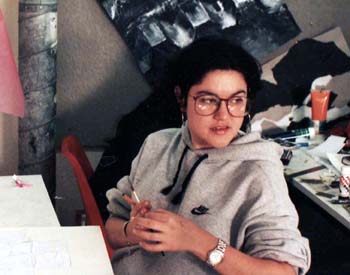 They released Sophia. It was too late; the damage had been done. Sophia relapsed, not to where she had been before, in Spring 2003, but to a hell-hole to which she had never been. She never recovered from this “treatment”. For her it was the equivalent of being in a tsunami from May - July, but this one was man-made.
She never stood a chance.
A few weeks later, her former G.P. Dr.Firth removed Sophia from the practice list of patients. I visited the new G.P. Dr. Clarke, who Sophia had been allocated to, and asked what their personal views on M.E. were? The response was that it was a mental illness, but that Dr. Clarke did not interfere with the patients, but let them “get on with it”. I thanked her and left the surgery. From that point on, Sophia never asked to see the doctor, neither did the doctor ask to see her. The hospital sent a letter saying that we could now have copies of Sophia’s notes - we had been trying to get them for over 8 months. Within the letter from the hospital they said that the psychiatrist Dr. Baginski was no longer working there. Within these notes we saw correspondence from Sophia’s first G.P. Dr. Firth (who was not mine), to the psychiatrist, Dr. Baginski , asking for me to be sectioned !! I had not realised just how far DR. Firth was prepared to go in order to have independent carers looking after Sophia.
We tried to take legal action. Funding was refused on the grounds that … “there was insufficient evidence of clinical negligence … and that there were no significant human rights issues which would justify the use of public finds to pursue this matter ... There is no further right of review against this decision”.
Between 2003 -2005, Sophia struggled hourly / daily to get back to the point of health she had prior to her incarceration. By July 2005, it seemed as if she had started to progress. In September, this monster of a disease took another turn. Sophia had become allergic to any and all types of food. Physically, she could eat, but the reactions were so severe, e.g. knives stabbing into her head, that this precluded her body being able to accept the food. Five weeks later, any sort of water or liquid had similar devastating effects on her; her glands would balloon-up and she felt as if the circulation in her legs was being cut off. She could only bear about 4 fluid ounces of water a day, which was used to moisten her mouth. At the end of October she got an ear infection. Her head and neck swelled-up like a football, she was in agonizing pain.
During these weeks, I asked her on a regular basis if she wished me to call a doctor? Her answer was always the same, “no”. Way back in 2003, when she knew that the doctors were treating her as a mental patient, (and ignoring what the WHO said about M.E), we discussed the subject. She asked me never to let a doctor near her who did not concur with the WHO. I promised.
They released Sophia. It was too late; the damage had been done. Sophia relapsed, not to where she had been before, in Spring 2003, but to a hell-hole to which she had never been. She never recovered from this “treatment”. For her it was the equivalent of being in a tsunami from May - July, but this one was man-made.
She never stood a chance.
A few weeks later, her former G.P. Dr.Firth removed Sophia from the practice list of patients. I visited the new G.P. Dr. Clarke, who Sophia had been allocated to, and asked what their personal views on M.E. were? The response was that it was a mental illness, but that Dr. Clarke did not interfere with the patients, but let them “get on with it”. I thanked her and left the surgery. From that point on, Sophia never asked to see the doctor, neither did the doctor ask to see her. The hospital sent a letter saying that we could now have copies of Sophia’s notes - we had been trying to get them for over 8 months. Within the letter from the hospital they said that the psychiatrist Dr. Baginski was no longer working there. Within these notes we saw correspondence from Sophia’s first G.P. Dr. Firth (who was not mine), to the psychiatrist, Dr. Baginski , asking for me to be sectioned !! I had not realised just how far DR. Firth was prepared to go in order to have independent carers looking after Sophia.
We tried to take legal action. Funding was refused on the grounds that … “there was insufficient evidence of clinical negligence … and that there were no significant human rights issues which would justify the use of public finds to pursue this matter ... There is no further right of review against this decision”.
Between 2003 -2005, Sophia struggled hourly / daily to get back to the point of health she had prior to her incarceration. By July 2005, it seemed as if she had started to progress. In September, this monster of a disease took another turn. Sophia had become allergic to any and all types of food. Physically, she could eat, but the reactions were so severe, e.g. knives stabbing into her head, that this precluded her body being able to accept the food. Five weeks later, any sort of water or liquid had similar devastating effects on her; her glands would balloon-up and she felt as if the circulation in her legs was being cut off. She could only bear about 4 fluid ounces of water a day, which was used to moisten her mouth. At the end of October she got an ear infection. Her head and neck swelled-up like a football, she was in agonizing pain.
During these weeks, I asked her on a regular basis if she wished me to call a doctor? Her answer was always the same, “no”. Way back in 2003, when she knew that the doctors were treating her as a mental patient, (and ignoring what the WHO said about M.E), we discussed the subject. She asked me never to let a doctor near her who did not concur with the WHO. I promised.
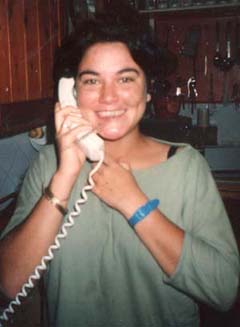
From Tuesday 22nd November, Sophia could not move an inch, neither could she sleep. On Friday 25th she died. I did not cry. I gave thanks that I had been able to keep my word that she would never be locked-up in a mental hospital again. All my grieving had been done during the previous 6 years and especially during the last 9 weeks, when I used to walk the streets with tears streaming down my face, knowing that there was nothing that I could do to help or comfort Sophia. Family and friends came to say their goodbyes to her. Four hours later, I phoned Dr. Clarkes surgery, only to be told that Sophia had been removed from their list since July of 2005. I said that neither Sophia nor I had removed her name. They did not seem interested. Dr. Clarke did not come out. I then called the ambulance men, who in turn called the police and the coroner’s staff. The ambulance and police staff were kindness itself.
Those last 9 weeks were something else. I had to take the responsibility for implementing Sophia’s wishes. By virtue of this monster of a disease, she still had to remain in blackout conditions and in isolation as to do otherwise would automatically tip her into another unknown hell. Even when I knew she was in agony and that she was virtually on her death-bed, she could not have the comfort of me or anyone even holding her hand or sitting with her. I had to know that my child was dying and do what caused her least pain, irrespective of my own feelings. We each had our own agony, as did the rest of our family and friends.
An autopsy was performed on Sophia. No cause of death could be found. A fortnight later more tests were carried out with the same results. Her heart was then sent away for testing which still showed up no abnormalities. Simon Lawrence from the 25% ME Group asked us if we would consider some research being done on Sophia. We readily agreed as we wanted others to benefit from Sophia’s life and death. Sophia’s spinal cord was taken away for research by Dr Chaudhuri in Romford and Dr O’Donovan in Cambridge. Permission for this was granted by the coroner. I understand that the coroner was unusual in allowing such research to be performed. Everyone at that office was most helpful to the two doctors involved. For this I am so grateful.
The results of this research was ...“unequivocal inflammatory changes affecting the special nerve cell collections (dorsal root ganglia) that are the gateways (or station) for all sensations going to brain through spinal cord. The changes of dorsal root ganglionitis seen in 75% of Sophia‘s spinal cord were very similar to that seen during active infection by herpes viruses (such as shingles).”
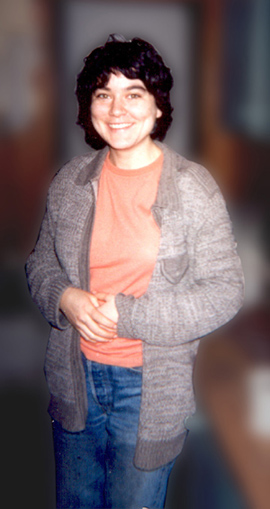
The doctors, social workers, chief executives, courts and others were well informed in writing, by me, of all the events that were about to unfold in early 2003, and yet, Sophia was “sectioned” as a result of exercising her right not to go into a particular ME Clinic. There are many similar calamities being reported of young M.E. patients being separated from their families behind the closed doors of Family Courts; and families being torn apart. The children and their families appear to have no redress.
During 2005, I was collating material to give to The General Medical Council. Before she died, I told Sophia that I wanted “to go public” so that others could possibly be saved such suffering. She answered … “then it will all have been worth it” … these were her last words.
After Sophia died, I asked, as her “personal representative” to see all her notes. This was refused. I was told that I would have to go through the courts in order to access them.
I have read suggestions that 95% of professionals and public do not believe that such an illness is possible. Of the people who dealt with us, about 50% said that Sophia was making herself ill so that she could get attention. The rest said that I was keeping her ill so that I could have some meaning in my life. A mixture said that she just wasn’t ill at all, that it was all “in the mind”. I do feel that I owe it to Sophia and all the other sufferers and their families not to allow this story to be airbrushed out of history. I have over 190 letters written between 2000 - 2003 to back up everything that I have said. In no less than 66 of these, was it said that Sophia has severe ME.
Following the loss of Sophia, I and my family feel we are free to speak the facts as experienced by Sophia. Whatever we say or write now will not bring her back to us. Sophia wanted to get better and live, but she needed to be able to live as a “free person”, not ruled by fear, incarcerated behind the locked doors of a mental hospital. This was not allowed. In order to get “help”, she had to agree that she was mentally ill; this she would not do. She lived her beliefs. I have never in my life known a braver or more courageous person than Sophia. She was an inspiration to us all. I do believe that every parent would say exactly the same about their child who is suffering from ME. It was Sophia’s wish that her living and suffering should not be in vain, but that it would help others. Only time will tell.
Sophia 1973 - 2005 It was a privilege to have known her.
by Críona Wilson (Sophia’s mother)
MAY 2006
RETURN TO HOMEPAGE
BACK TO TOP